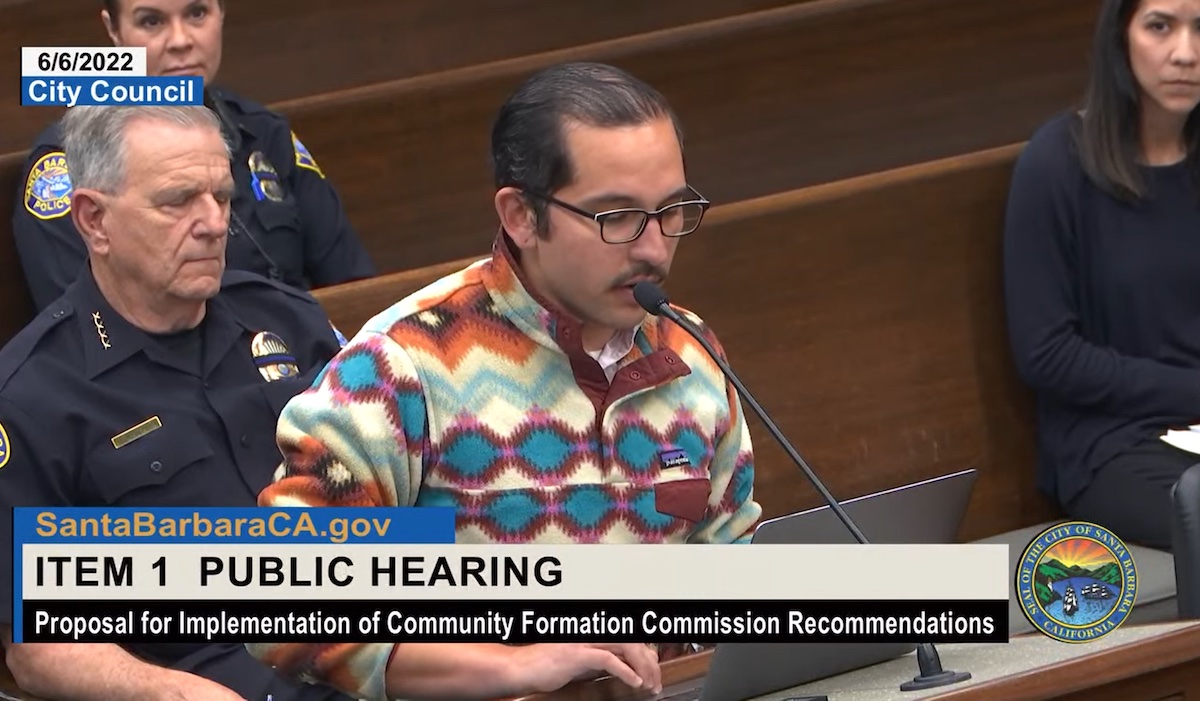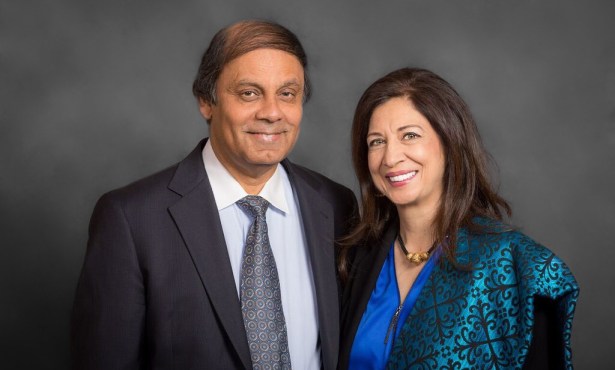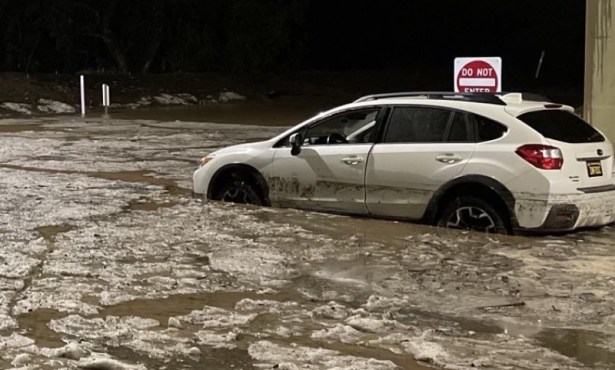Santa Barbara’s Community Formation Commission ‘Frustrated’ by Police Oversight Pivot
City Council Moves Forward with Proposal to Give Oversight Duties to Fire & Police Commission, City Administrator's Office

During a contentious special meeting of the Santa Barbara City Council on Monday — which reportedly ended in a confrontation involving the city’s interim police chief and the chair of the Community Formation Commission (CFC) — councilmembers moved forward with city staff’s recommendations to give greater police oversight and monitoring powers to the Fire & Police Commission and the City Administrator’s Office in lieu of creating the Civilian Oversight Board championed by the CFC. Members of the CFC — which had spent the past 13 months working toward its recommendations — spoke out at Monday’s meeting, saying they were “disappointed” and “frustrated” by the recommendations made in the final proposal presented to the City Council, which amended the proposal before moving forward with it in a 6-1 vote.
Formed in the wake of George Floyd’s murder by Minneapolis police, the CFC had asked for an 11-person Civilian Oversight Board, separate from an existing commission, which had its own mission statement to “ensure that SBPD is responsive to the concerns and needs of all members of the Santa Barbara community while promoting transparency and accountability, and building public trust between the community and the SBPD.” The CFC’s final draft recommendation was a detailed outline for the makeup, duties, responsibilities, and processes for a civilian oversight model, which included ideas for review, training, and community engagement that many members of the commission said were not included in the version presented to the City Council.
City staff explained that some of the CFC’s recommendations — like asking for subpoena power and the ability to hold closed sessions — were already under the Fire & Police Commission’s purview, making this implementation both quicker and more cost-efficient than CFC’s recommendations. Many of the CFC’s recommendations were, in fact, included, but members of the public said folding these into a board that already existed was not a proper response to the CFC’s final draft.
Councilmembers commented that the final recommendations did not represent what the CFC had put forward, and many councilmembers said they were not prepared to pass it through. Then Councilmember Meagan Harmon suggested they push the recommendations forward with added provisions to require at least one year with an independent auditor; a total reconstitution of the Fire & Police commission; a public meeting to narrow down a threshold for outside investigations; and collaboration with the CFC before finalizing an ordinance. The oversight duties would fall under the Fire & Police Commission, with the City Administrator’s Office handling personnel-related issues.
Several CFC members voiced their opposition to the new proposal during public comment, along with representatives from Healing Justice S.B., and community activists who called the final recommendations a “slap in the face” to the work the committee had done to tailor its recommendations to the city’s needs.
CFC Chair Gabe Escobedo was the first to criticize what he said represented only a portion of the group’s work. ”While the staff’s report would like you to think that this recommendation is in line with the CFC recommendation, it is not,” Escobedo said. “What you have before you is an advisory board, not an oversight board — in other terms, oversight in name only.”
At least seven former members of the CFC said they have felt shut out of the process since the final meeting in April, and community members worried during public comment that this was another example of community engagement falling on deaf ears.
In a follow-up interview with the Independent, Barbara Andersen — senior assistant to the city administrator and the person on whom the duties of auditor and monitor of the Police Department will fall — said she was taken aback by allegations from some members of the CFC that they had not been informed of the changes and their feedback had not been sought. Andersen stated she and Interim Chief Melekian had five or six meetings with Escobedo since the council’s April 22 meeting. Escobedo, she stated, had been designated the point person by the council to hash out a deal with Melekian. In addition, Andersen said, she had met with four other members of the commission. Beyond that, she stated, she’d communicated the proposal as it evolved in writing. Andersen said she was very surprised to hear several members of the commission testify to the contrary.
At Monday’s meeting, Andersen explained the role of the Administrator’s Office and Fire & Police Commissioners in the new system. The five-person commission would be expanded to a seven-member group, which would require a new roster front-to-back, she said, “because the commissioners would be getting a lot more responsibility and power.” Expanding and recruiting seven members would have to wait until 2024, leaving the immediate future of police oversight in flux while the details are worked out.
Sign up for Indy Today to receive fresh news from Independent.com, in your inbox, every morning.
Several councilmembers shared their own disappointment and frustration that the final product was so far from what CFC had recommended, though Councilmember Kristen Sneddon was the only one to vote against the proposal, saying she felt like ”it wasn’t ready” to move forward.
Councilmember Alejandra Gutierrez agreed that the recommendations were different than those made by the CFC, but encouraged the council to move forward before Interim Chief Barney Melekian’s scheduled last day at the end of the month. She also worried that those in the most vulnerable communities did not feel heard and wondered if complaint forms were inaccessible.
“We do want more community engagement and more community input,” Andersen said in response to Gutierrez. “You’re completely on point in terms of the suggestion of making sure that the staff are able to be there to assist individuals in filling out those forms.”
Mayor Randy Rowse was adamant on moving the recommendations forward as is, saying the Santa Barbara Police Department presented none of the nationwide symptoms that this sort of sweeping reform was meant to remedy. “The idea that we’re going to keep tweaking this and try to get it to another level,” he said, “I don’t understand the need to rehash this.”
One of the most contested aspects of the oversight falling to the Fire & Police Commission was whether a board that was technically under the City Council could have hiring or firing power that the council itself didn’t hold. Currently, the Fire & Police Commission advises the City Council and City Administrator “in all matters relating to efficient and adequate fire and police protection for the City” and can make recommendations for regulations, budget, and chief appointments. But it has little power currently and meet only once a month. Ultimately, 10 of the recommendations were folded under the commission’s responsibilities, with the other two dealing with employee matters falling to the City Administrator.
There is still plenty of work to be done, as the city is planning to work with members of the CFC to create the ordinance, which will bounce back to the City Council. City Attorney Ariel Calonne said he expects the ordinance will require “extensive civil engagement with the ordinance committee,” and may take until after summer to be finalized. A complete breakdown of the city staff’s proposed recommendations can be found here.
Shortly after the meeting, conflicting reports emerged from witnesses at City Hall about an interchange between Melekian and Escobedo over whether Escobedo had accused Melekian of lying. Melekian told the Independent that the exchange was straightforward and calm. Since he and Escobedo had worked together for the better part of a year, he felt they could speak frankly together.
Escobedo, who did not comment on the incident, told the Independent, “Frankly, this was a long and difficult process for everyone involved, but I’m encouraged that we were able to pass an oversight model that will hopefully make Santa Barbara safer for everyone.“
This story has been edited to reflect updated information.
Support the Santa Barbara Independent through a long-term or a single contribution.



